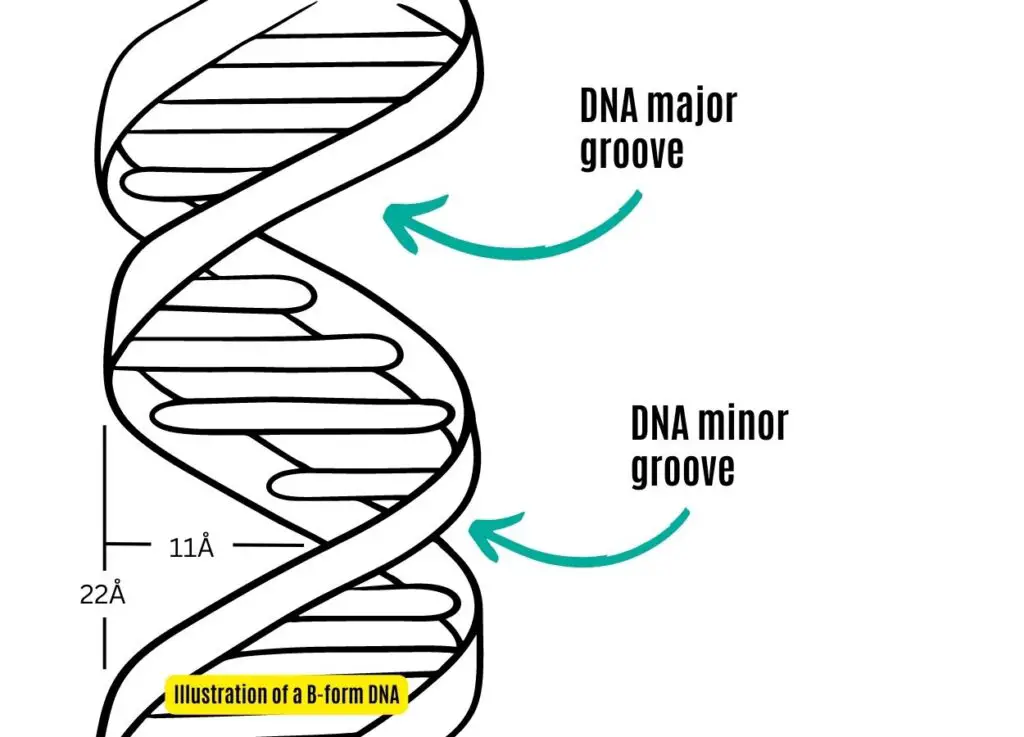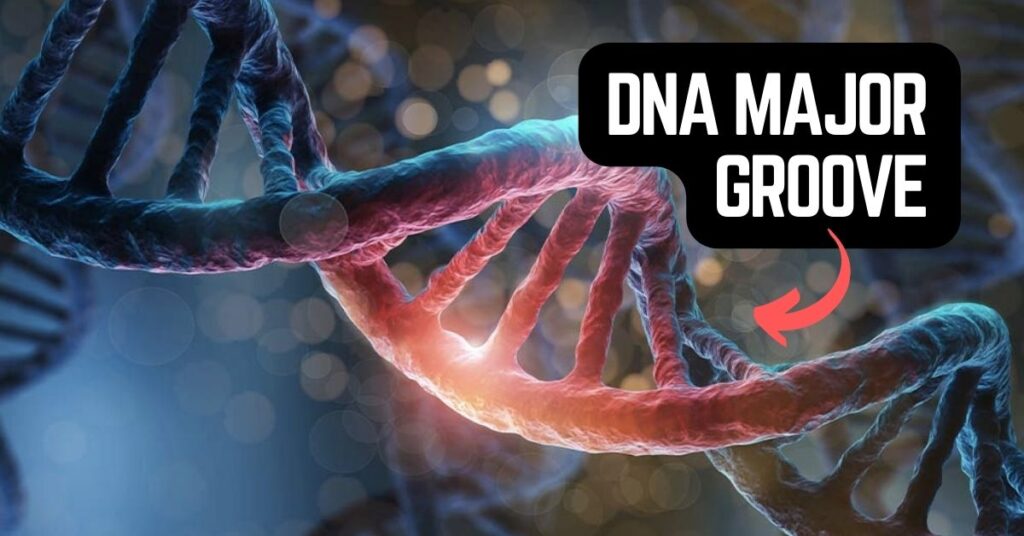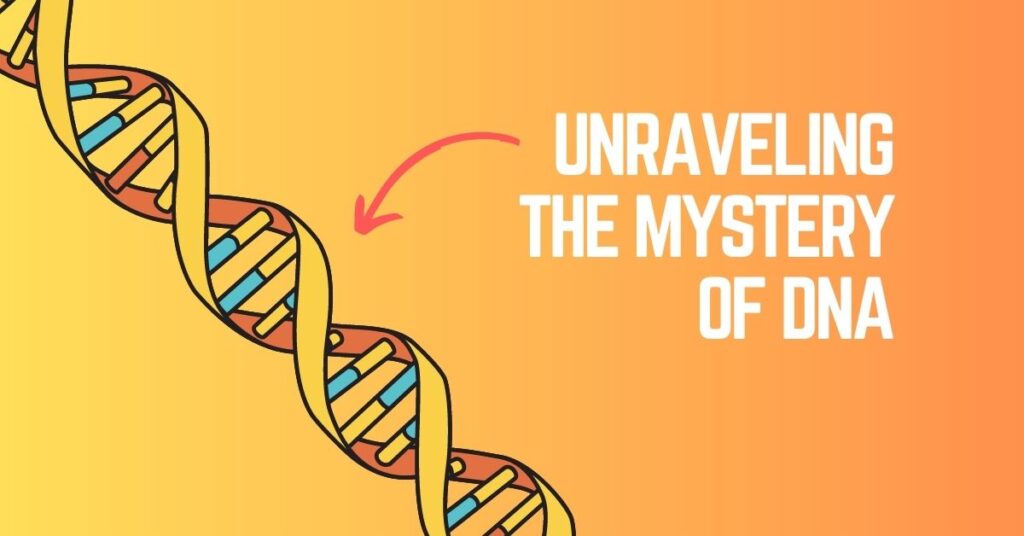“Learn why the DNA major groove is important and How it regulates gene expression. Also, explore its potential applications in medical science, genetic engineering, biotechnology and gene therapy. Let’s see how this structural mystery leads to innovation in biotech.”
Since the double-helix structure of DNA was discovered by Watson and Crick in 1953, researchers can understand this fundamental element of life more accurately. Why we are so successful in genetic research! Because the ‘duo’ has correctly explained the structure.
And remained significantly crucial discoveries till now.
Now we know that DNA is a blueprint of us, a genetic material and a unit of inheritance. It can store and transfer genetic information and hence, can help us to survive. These facts are well-established and universally accepted, without any bias.
Research largely focused only on three structural continents of DNA viz sugar, phosphate and nitrogenous bases, until the recent decade. However, when ‘gene expression’ came into light, poorly understood structural constituents came into the picture, for example, DNA major groove.
Scientists now know how important the DNA major groove is, for the regulation of gene expression and other DNA activities. As we do more and more research, more information and lucrative advantages are outburst on the surface.
In this article, we will understand the importance of the DNA major groove and its applications in medicines, genetic research, gene expression and drug discoveries.
Stay tuned.
Key Topics:
What is the DNA major groove?
A typical B-form DNA, which we have and is most abundant on Earth, is a spiral structure, more uneven and creates major and minor grooves from the outside. The major groove, in particular, is a site for protein binding and allows various DNA activities such as replication, transcription and DNA packaging.
However, notedly the minor groove also allows some proteins to interact.
Structure:
The DNA major groove is wider, deeper and larger in shape than the minor groove. It is formed by DNA base pairing. It is ~12Å in size which is almost doubled, compared with the minor groove and ~8.5 to Å deeper (Source: Oxford Reference). This means it’s a significantly larger space in the DNA structure.
Notedly, nothing is meaningless here, the extra depth of the groove exposes nitrogenous bases for other molecules to bind, for example– proteins. And here its important function came into focus- regulation of gene expression.
| Type of DNA | Major groove | Accessibility | Dimensions |
| A form DNA | Wider and shallow | Moderate accessible for protein binding. | Width- 16Å (range: 10 to 20Å)Depth- 4Å (range: 2 to 6Å) |
| B form DNA | Wide and deep | Highly accessible for protein binding. | Width- 22Å (range: 18 to 16Å)Depth- 11Å (range: 8 to 13Å) |
| Z form DNA | Narrow and deep | Poorly accessible for protein binding. | Width- 12Å (range: 8 to 16Å)Depth- 6Å (range: 4 to 8Å) |

Function:
The major groove is an important structural character of the DNA which allows it to replicate, transcribe and perform various functions. This large outlet can give direct entry to proteins that can recognize a ‘particular’ binding site on DNA.
Such specific binding between protein and DNA executes different functions for DNA. For example, when polymerase excesses the major groove, binds, performs a catalytic reaction and replication occurs.
Likewise, when any transcriptional factors find their binding site on the major groove, they settle there, perform catalytic action and do transcription. Henceforth, crucial cellular activities are governed by these DNA-protein interactions.
Replication and transcription like nuclear activities are highly regulated by DNA- protein interaction at the major groove. Recent findings demonstrate that gene expression regulation is highly dependent on DNA-protein interaction at DNA major groove.
For example, histones– DNA binding proteins, bind at a DNA major groove, form nucleosomes and make DNA transcriptionally inactive. Resultantly, it helps in DNA packaging.
Another important biological reaction methylation also occurred at DNA major groove. Enzyme DNA methyltransferase when finds its complementary substrate at DNA major groove, adds a methyl group to the substrate DNA and makes it transcriptionally inactive.
Conversely, when transcriptional factors, for example– Gfi1, and Oct1, particularly find the wider DNA opening, they trigger transcription.
So now, it is evident that the wider opening of the DNA- DNA major grooves have a crucial role in the regulation of gene expression. In addition to this, the protein-DNA interaction also modulates the structure of DNA as well.
You may wonder, is this information useful, can we use this structural element of DNA for any purpose? Does it have any applications?
Yes, it has!
Applications of DNA major groove
The present knowledge is important and opened new doors for researchers, particularly for cancer genetics. Cancer is uncontrolled cell growth, we know it but is triggered by dysregulation of gene expression.
In medical science, the DNA major groove can be utilized as a drug target where, when a drug binds to a specifically ‘targeted DNA major groove’, can block the site for some proteins and thereby uncontrolled gene expression.
For instance, if a drug can bind to the major groove and is able to block the site for replication or transcription proteins, it eventually inhibits replication or transcription. Conclusively, it can be used for “epigenetic editing.”
It can be used for a therapeutic purpose to repair DNA too. For example, any protein can be used to bind to the site for DNA damage and allow the catalytic action of DNA repair enzymes.
It is also applicable in synthetic biology and genetic engineering. Scientists can engineer novel DNA-binding proteins, specific to some ‘target sequence’ and can control gene expression activities.
For example, the revolutionary CRISPR-Cas9 gene editing technique used artificially synthesized guided RNA to target a DNA major groove and perform gene editing. Other techniques also use the same principle.
Further to this, at a ground level, it allows us to research why a specific DNA-protein interaction occurs or why some specific proteins bind at a specific location on the minor groove. Such research helps us better understand the mechanism of gene expression.
Anthracyclines, Chromomycin A3 (antibiotic), Netropsin, doxorubicin and Distamycin are several examples of molecules and drugs, that can bind to DNA major groove (at their specific target) and inhibit either replication or transcription by various means.
Conclusion:
In conclusion, the DNA major groove has been an important structural element of DNA. It’s indeed present to perform gene expression and provide a binding site for various proteins to execute cellular activities.
Scientists are trying to utilize a targeted major groove binding for gene therapy and research is ongoing. In the near future, we have engineered and synthetic proteins that would trigger DNA repair activities and help prevent cancer.
I hope you like this article. Please share it and bookmark the page.
Resources:
- Neidle, S. (2008). The structure of DNA. In M. F. Chaplin & C. Bucke (Eds.), Enzyme Technology (pp. 69-102). Cambridge University Press.
- Saenger, W. (1984). Principles of nucleic acid structure. Springer-Verlag.


